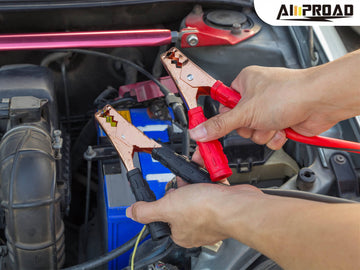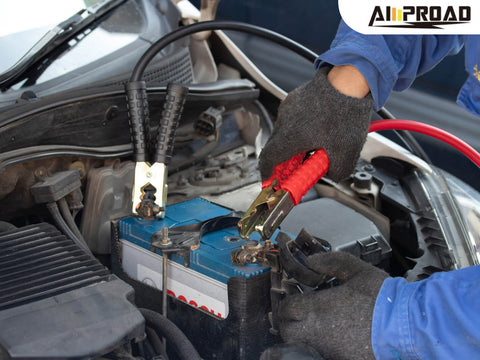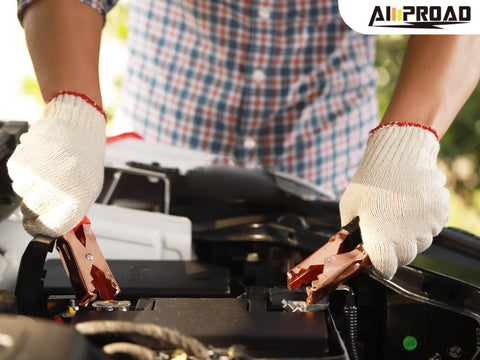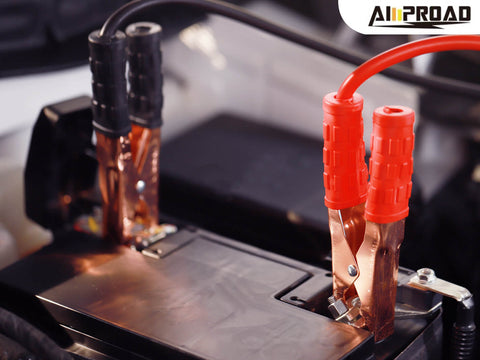
Worried about getting stranded with a dead car battery? Portable jump starters offer a quick fix, but choosing the right one can be daunting. This exploration takes a personalized approach to help you find the perfect match. We'll explore factors like amperage, portability, and safety, tailored to your needs. Dive into the science behind jump starters, understanding how specs like cranking amps work for different engines. Safety comes first, with tips on proper jumpstarting techniques and key safety features. Say goodbye to battery woes—let's find your ideal jump starter!
What Jump Starter Fits Your Needs?
Frequent traveler vs. occasional user?
Jump starters aren't one-size-fits-all. Are you a frequent traveler braving remote roads, or an occasional driver seeking peace of mind? We'll categorize jump starters tailored to your specific needs, ensuring you get the right tool for the job. Frequent travelers may require robust jump starters with higher cranking amps to tackle larger engines and remote locations, while occasional users may prioritize compact, easy-to-use models for emergencies.
High amps for big engines? Portability for on-the-go?
Are high amps necessary for big engines? Is portability crucial for on-the-go usage? We'll delve into the features that matter most, aligning with your unique situation. For those with larger vehicles, jump starters with high cranking amps offer the power needed to kick-start engines efficiently. Meanwhile, portability becomes essential for travelers, with lightweight and compact designs ensuring easy storage and transport. Safety features like reverse polarity protection and built-in LED lights are also crucial considerations for all users, providing added peace of mind during emergencies.
It's not about finding the "best" one; it's about finding the right one for your needs. For users seeking a powerful and portable solution, the AMPROAD jump starter offers high cranking amps in a compact design. With its advanced lithium-ion battery technology, the AMPROAD jump starter delivers reliable performance, capable of starting larger engines with ease. Its portable size makes it ideal for on-the-go use, whether you're traveling or simply need a reliable backup in your vehicle.
User Stories: Jump Starting in Action!

Can it jumpstart a large SUV in the wilderness?
Picture this: You're stranded in the wilderness with a dead battery, and all you have is your trusty jump starter. How to give a car boost with it? Will it have enough juice to bring your large SUV back to life? We'll explore real-life scenarios and put jump starters to the test, evaluating their performance in challenging situations. From starting oversized engines to enduring harsh conditions, we'll see if these jump starters truly deliver when you need them most.
Is it Easy to Use and Safe?
Ease of use and safety are paramount when it comes to jump starters. No one wants to fumble around with complicated instructions or risk damaging their vehicle. We'll assess the user-friendliness of various jump starters, considering factors like intuitive design, clear instructions, and built-in safety features. From novice drivers to seasoned mechanics, we'll determine which jump starters offer a hassle-free experience and provide peace of mind during emergencies.
In the wild terrain of the wilderness or the bustling streets of the city, a reliable jump starter can be a lifesaver. But how do you know which one is right for you? We'll delve into real-world testing and user-friendly features, including how to boost a car, to help you make an informed decision. Whether you're facing a dead battery in the middle of nowhere or just need a backup plan for unexpected roadside emergencies, we've got you covered. Let's jump into action and find the perfect jump starter to keep you moving forward, no matter where the road takes you.
The Science Behind the Spark: Understanding Specs
What cranking amps mean and how they affect jumpstarting different engine sizes
Cranking amps (CA) refer to the amount of current a battery can deliver for 30 seconds at 32°F (0°C) while maintaining a voltage of at least 7.2 volts for a 12-volt battery. This specification indicates a battery's ability to start an engine in cold weather conditions. For jump starters, higher cranking amps generally mean more power and better performance when starting larger engines, such as those found in SUVs or trucks. Understanding the cranking amp requirements of your vehicle is essential for selecting a jump starter that can effectively provide the necessary power to start your engine, especially in challenging conditions.
Battery capacity, peak amps for very dead batteries, and safety certifications
Battery capacity, typically measured in ampere-hours (Ah), indicates the total amount of charge a battery can hold and is an important factor to consider when choosing a jump starter. A higher capacity means more stored energy, allowing the jump starter to provide multiple jumpstarts on a single charge. Peak amps, on the other hand, represent the maximum current output a jump starter can deliver for a short duration, typically a few seconds. This specification is crucial for jumpstarting very dead batteries or vehicles with high starting resistance. Additionally, look for safety certifications such as UL (Underwriters Laboratories) or CE (Conformité Européenne) to ensure that the jump starter meets rigorous safety standards and is safe to use.
Understanding the technical specifications of jump starters is essential for making an informed purchasing decision and ensuring that the device meets your specific needs. By grasping concepts like cranking amps, battery capacity, peak amps, and safety certifications, you can confidently select a jump starter that provides reliable performance, safety, and peace of mind when you need it most.
Safety First: Jumpstarting Done Right!

Learn proper connection procedures and safety precautions to avoid car damage
Jump start a car can be risky if not done correctly, potentially causing damage to your vehicle's electrical system or even injury. Before attempting to give a car a boost, it's essential to familiarize yourself with proper connection procedures and safety precautions. Ensure both vehicles are turned off and in park or neutral before connecting the jumper cables. Identify the positive (+) and negative (-) terminals on both batteries, and always connect the cables in the correct order: positive to positive, and negative to a metal ground on the dead car's frame. Avoid touching the metal clamps together or letting them touch each other during the process to prevent sparking.
Safety Features in Action: Spark protection, reverse polarity protection, automatic shut-off - how these features keep you safe
Modern jump starters come equipped with various safety features designed to protect both you and your vehicle during the jumpstarting process. Spark protection technology minimizes the risk of sparks when connecting the jumper cables, reducing the likelihood of accidental ignition of battery gases. Reverse polarity protection prevents damage to the jump starter and your vehicle by detecting incorrect cable connections and automatically shutting off power flow. Automatic shut-off features ensure that power is cut off if the battery booster detects overheating or other abnormalities, preventing potential damage or injury. By understanding and utilizing these safety features, you can jumpstart your car with confidence, knowing that you're protected from potential hazards.
Jumpstarting your car doesn't have to be a daunting task, as long as you follow proper procedures and utilize the safety features of your jump starter. By taking the time to learn and understand these essential safety precautions, you can ensure a successful jumpstart without risking damage to your vehicle or injury to yourself. Remember, safety should always be your top priority when dealing with car maintenance tasks like giving a car a boost.
Innovation on the Horizon of Jump Starting
As technology continues to evolve, so too does the world of jump starting. One exciting development on the horizon is the widespread adoption of lithium-ion batteries in jump starters. These batteries offer several advantages over traditional lead-acid batteries, including higher energy density, faster charging times, and longer lifespan. Additionally, smart jump starters equipped with diagnostic capabilities are gaining popularity. These devices can analyze the condition of the vehicle's battery and electrical system, providing valuable insights to the user before attempting a jump start.
These advancements in jump starting technology hold significant promise for consumers. Lithium-ion batteries are lighter and more compact than traditional lead-acid batteries, making them easier to transport and store. They also provide more consistent power output, ensuring reliable performance when jump starting a vehicle. Smart jump starters with diagnostic features offer added convenience and peace of mind, allowing users to identify potential issues with their vehicle's battery or electrical system before they become a problem. Overall, these innovations are poised to make jump starting easier, safer, and more user-friendly for drivers everywhere.
FAQs / People Also Ask
Q: How do I know if my car battery needs a jump start?
A: Signs that your car battery might need a jump start include dim headlights, difficulty starting the engine, or a clicking sound when you turn the key. If your car exhibits any of these symptoms, it's a good idea to have the battery tested and consider jump starting if necessary.
Q: Can I jump start my car if I don't have another vehicle to assist?
A: Yes, you can use a portable jump starter to jump start your car without the need for another vehicle. Portable jump starters are compact, battery-powered devices that provide the necessary power to start a vehicle's engine when the battery is dead.
Q: Is jump starting my car safe?
A: Jump starting a car can be safe if done correctly. It's essential to follow proper procedures and use caution to avoid injury or damage to the vehicle's electrical system. Make sure both vehicles are turned off and follow the manufacturer's instructions for connecting the jumper cables. Additionally, using a jump starter with built-in safety features, such as spark protection and reverse polarity protection, can help mitigate risks.



